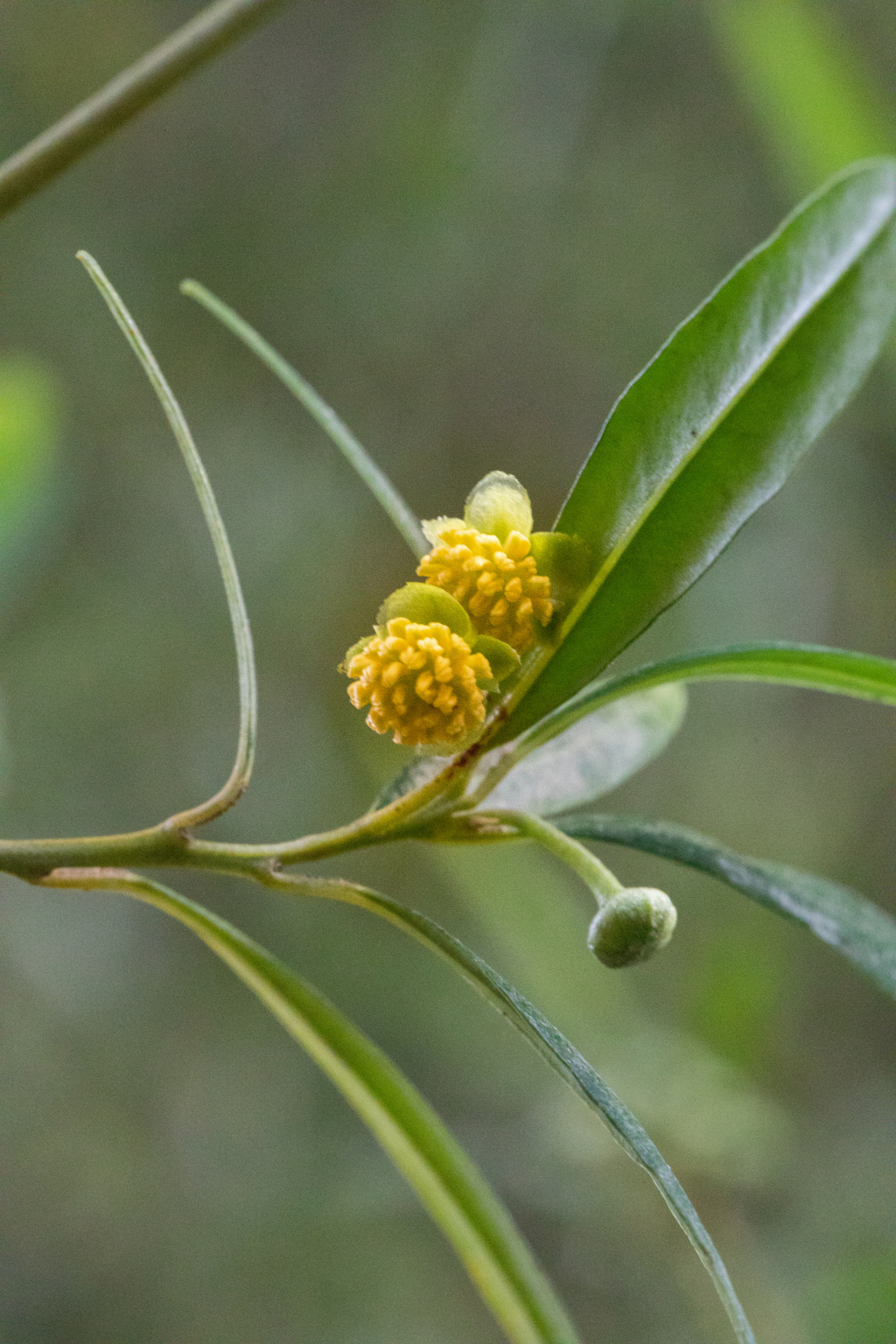Beyeria lanceolata
Halford & R.J.F.Hend.Erect shrub 3–4 m high. Leaves lanceolate, 55–120 mm long, 6–18 mm wide, acute at apex, margins flat or slightly recurved, glabrous, upper surface dark green, often viscid, lower surface pale green to whitish; petiole 3–6 mm long. Male flowers solitary or up to 4 in a cluster on a viscid peduncle to c. 4 mm long; pedicels 7–9 mm long; bracts linear to narrow-ovate, to c. 3 mm long, green; sepals ovate, 3–4 mm long, viscid. Female flowers solitary on peduncle to c. 4 mm long; pedicel 6–10 mm long (to c. 15 mm in fruit); sepals ovate 2.5–3.5 mm long, whitish; ovary glabrous, stigma c. 2 mm wide, sessile, cap-shaped, persistent in fruit. Capsule subglobose, 10–12 mm long, glabrous, viscid; seeds usually 3, obloid, c. 6 mm long, dark brown or mottled brown and grey. Flowers mostly Dec.–Feb.
GipP, EGL, EGU, HSF, MonT, HFE. Also NSW. Apart from an isolated occurrence in the Dandenong Ranges, confined in Victoria to East Gippsland where usually found in gullies, often in rocky situations.
Except for an old collection from near Point Nepean, Victorian records of Beyeria viscosa are referable to B. lanceolata.
 Spinning
Spinning

